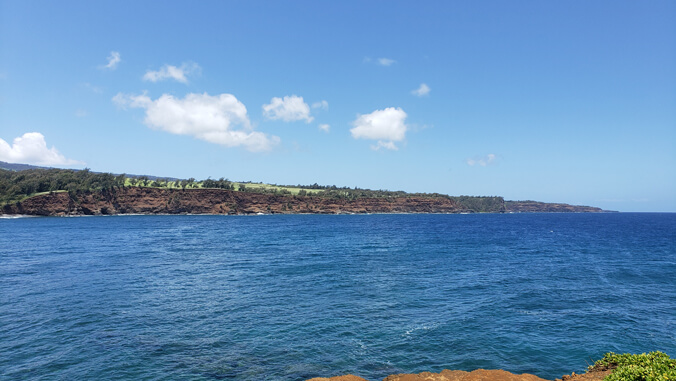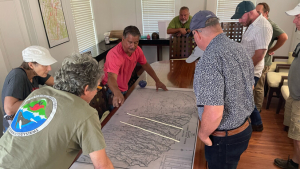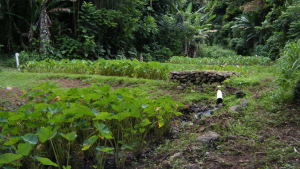
Because Hawaiʻi imports about 90% of its food supply, global events such as the COVID-19 pandemic and the war in Ukraine have caused shortages in the islands that exposed the state's vulnerability to situations beyond its control.

To address this vital issue of sustenance, the University of Hawaiʻi and other stakeholders are incorporating contemporary science with sustainable practices of the past to help provide solutions to food and energy security, for the state and beyond. UH has partnered with ʻIole, a non-profit, place-based research center and living scientific laboratory on Hawaiʻi Island that is gathering academic experts, Native Hawaiian practitioners, community members, students and government representatives to develop sustainability solutions based on ancestral knowledge and Indigenous practices.
Located on approximately 2,400 acres in Kohala, the ʻIole ahupuaʻa (self-sustaining sections of land that run from mountain to the sea) was gifted to the Hawaiʻi Community Foundation (HCF) by longtime stewards, the Kohala Institute and the New Moon Foundation, in an effort to increase capacity to the area's restoration. HCF partnered with UH and Arizona State University to leverage their expertise and resources in three areas: energy security, food security and place-based learning.

"We are all excited at this opportunity to collaboratively envision and create a 21st century ahupuaʻa," said UH President David Lassner. "ʻIole can be a place grounded in Hawaiian values and knowledge where we are jointly committed to the innovation and courage necessary to integrate traditional and modern ways of learning, doing and living."
One of the first priorities of ʻIole was to assess and inventory the critical natural resources found throughout the ʻIole ahupuaʻa. The findings helped to establish the foundation of ʻIole's strategy and engagement, He Le Aloha no ʻIole, which was crafted by Sharon Ziegler-Chong, director of research and community partnerships at UH Hilo and Kamuela Enos, director of the UH Office of Indigenous Knowledge and Innovation. The wide range of multidisciplinary research projects are being spearheaded by UH Hilo.
"The value proposition here is that we have a real opportunity with an intact valley to create a world-class facility to show the importance of traditional practices not just as culture, but as deep scientific regenerative biosystems management," said Enos. "To restore the valley, to center our work in empowering Kohala youth in process of learning, and to support the development of future scientist practitioners both kānaka (Native Hawaiian) and kamaʻāina (Hawaiʻi resident)—offers a unique opportunity and responsibility for UH to hold in this consortium."
For more on the projects led by UH Hilo, see Noelo's 2023 story. Noelo is UH's research magazine from the Office of the Vice President for Research and Innovation.






